
There are fewer more enchanting and exciting gems than diamonds. The stones themselves come in eight basic ‘cuts’, and the one you choose is generally decided by personal preference and, of course, the occasion.
So, if you’re thinking of buying a new ring that includes one or more of these beautiful stones, why not take a look at various cuts on offer and the things you may want to bear in mind when deciding which one to pick.
Some basic terminology
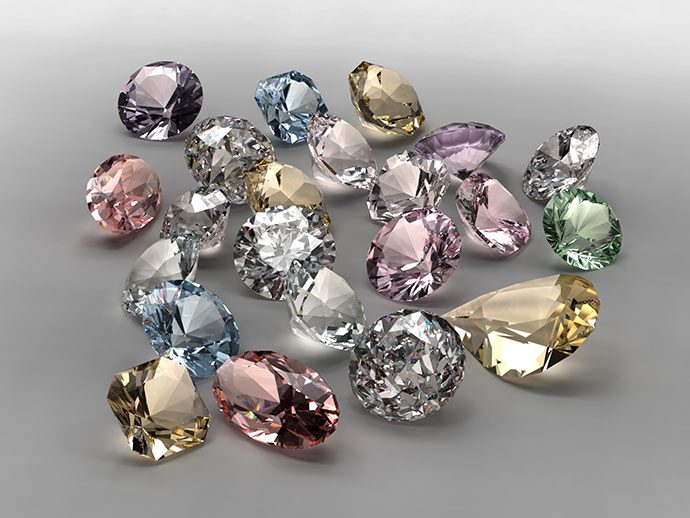
Before we get started, it’s useful to get to grips with some of the language and terms used when discussing gemstones:
- ‘Facets’ refer to the ‘flat’ surfaces on geometric shapes. Gemstones have facets cut into them, which is one of the reasons they reflect light. It’s important that your diamond has the correct number of facets for the shape.
- The ‘depth’ of a diamond refers to its height in millimetres measured from the ‘culet’ (the very base of the stone) to its ‘table’ (the largest flat facet of the diamond as seen when the stone is face up). This plays a vital role in the light performance of the gem).
- On a grading report (a kind of quality analysis), there are normally 2 measurements of depth:
- The actual depth measurement in millimetres.
- The depth ‘percentage’, which shows how deep the diamond is in relation to its width.
- The ‘girdle’ is the widest part of the stone, and is also the demarcation line between the top and bottom parts of a diamond. The portion of the gem above the girdle is called the ‘crown’, and the part below it is known as the ‘pavilion’. All other parts of the stone are compared with the girdle, in terms of size, and this comparison is often used to determine how well the stone has been cut.
- Length-to-width ratio quite simply determines how long the stone is compared to its width. To calculate this, just divide the length by the width.
- ‘Fire’ and ‘brilliance’ describes the diamond’s intensity of colour, and the brightness it reflects.
- The ‘grade’ describes the quality of the stones. The most common categories are:
- Poor
- Fair
- Good
- Very good
- Excellent
- Ideal.
The last four of these grades are usually recommended to give the greatest brilliance.
Different types of cuts
Round brilliant cut

This is the most popular and best-selling shape, particularly for engagement and eternity rings due to its circular outline indicating constancy. Almost all are ‘brilliant cut’, meaning that they have 58 facets – or 57 where there is no cutlet – 33 in the crown and 25 in the pavilion.
Marcel Tolkowsky proposed the ‘ideal’ proportions for round brilliant cut diamonds as early as 1919 in his ‘Diamond Design: A Study of the Reflection and Refraction of Light in Diamond’. It recommended that the perfect proportions for such a gem should be ‘53% table, 59.3% depth, 34.50 crown angle, visible culet’. These have since been revised slightly to take into account modern crafting advancements, including laser cutting, but are still a good guide.
Princess cut
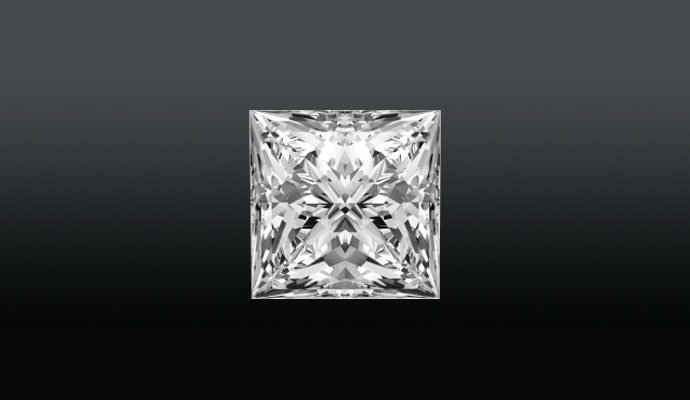
The princess cut diamond is probably the second most popular cut; its distinctive pointed corners and square shape also make it a favourite for engagement rings.
The princess shape can vary considerably – some being very square, with a length-to-width ratio between one and 1.05. For a rectangular shape, the ratio should be greater than 1.10.
This kind of cut should always be placed in a setting that protects its vulnerable four corners, which are prone to chipping.
Cushion cut

The cushion cut diamond is basically a square cut but with rounded corners, much like a pillow or cushion (hence it’s name). Created almost 200 years ago, it was once the popular shape for diamonds. Many buyers are now attracted by its slightly ‘antique’ feel.
Traditional cushion cut diamonds tend to reflect light in a more solid pattern than other modern cuts, although they do come in a wide variety of forms. A length-to-width ratio of between 1 and 1.05 will give you a squarish diamond, whereas a ratio greater than 1.15 will yield a more rectangular shape.
Oval cut
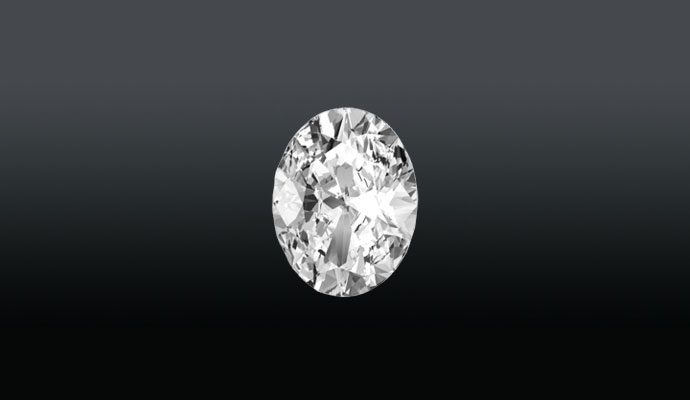
Oval diamonds are modelled on the round brilliant-cut, and so should possess similar brilliance. The oval is a good choice for people looking for something a little different to the classic round diamond. Its elongated shape helps the stone seem bigger and, as a bonus, the finger of the person wearing it appears longer and slimmer.
Oval diamonds vary in their length-to-width ratio. Which one you decide upon is dependent on individual preference – the wider the width, the more circular it will look.
A traditional oval shape has a length-to-width ratio of between 1.33 and 1.66.
Emerald cut
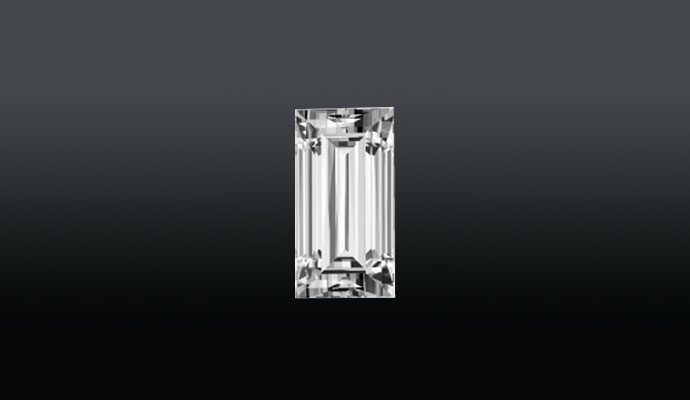
Rectangular in shape, the emerald cut diamond is a more unusual alternative to more traditional styles and was actually developed as the ideal cut for the gem it is named after. It has an open table and its pavilion has rectangular facets, which create broad glints of brilliance rather than sparkles of light.
Emerald cut diamonds vary in how rectangular they are. A classic emerald shape has a length-to-width ratio that ranges between 1.30 and 1.40.
Radiant cut

The radiant cut diamond has a square shape with cropped corners. It sits somewhere between the cushion and the princess cut. It started to become increasingly popular from the 1980s onwards, due to its versatility.
For a square radiant shape look for a length-to-width ratio between 1 and 1.05, or for a more rectangular stone go for one greater than 1.10.
Heart cut
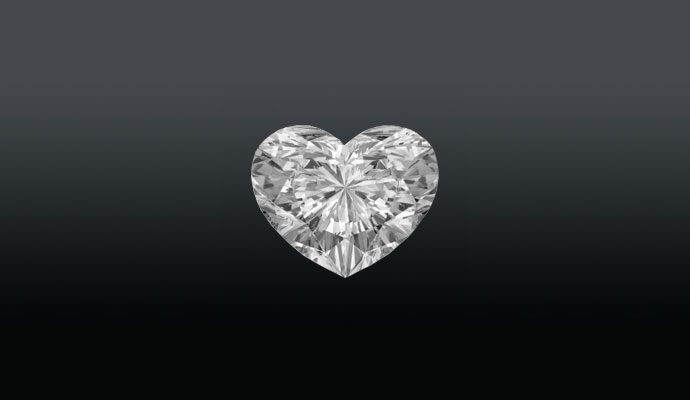
Unsurprisingly, the heart shape cut is thought by many to be the most romantic of all designs, and is popular for eternity and engagement rings, and also pendants.
If you choose this kind of cut, it’s very important to seek good symmetry so that the two halves of the heart are identical. And try to avoid heart shaped diamonds of less than .50 carats, because the heart shape is more difficult to discern in smaller stones.
You’ll find heart shaped diamonds in a variety of silhouettes, from narrow to plump. The length to width ratio of a classic heart shaped diamond is approximately 1.00, although those purchasing heart diamonds for pendants may prefer a slightly narrow cut of between 1.05 and 1.15, and hearts to be used in solitaire rings are generally a slightly wider cut of between 0.85 – 1.00.
Marquise cut
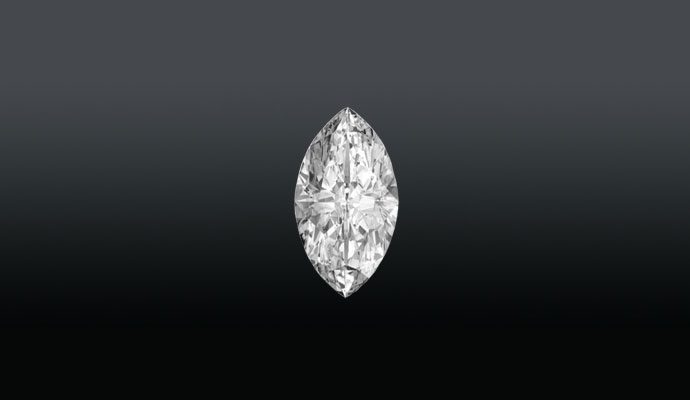
This stunning cut, allegedly named by King Louis XIV of France as resembling the shape of the mouth of the Marquise of Pompadour, is actually more of an American football shape.
Its relatively long and thin form can make this cut appear larger than it really is, making it a good value choice. Like the oval, the marquise’s shape can make the finger of the wearer appear longer slimmer.
Again, use your personal preference to choose how narrow or wide you want your diamond’s girth to be. A length-to-width ratio of 1.75 -2.15 is considered the classic marquise cut.
Symmetry is crucial in this cut. The two end points should be perfectly aligned at opposite sides of a ring. As with the princess cut, the marquise should always be set with prongs to protect its points against damage and chipping.
Pear cut
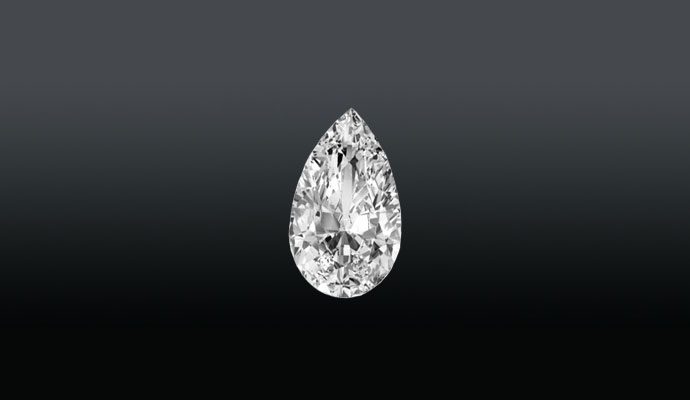
The pear cut is also known as the ‘teardrop’ due to its shape, and is a popular choice for engagement rings as it appears larger than a round-cut diamond. And for a more slimming look for your finger, you should wear the wide end at the base of your finger with the tapered end pointing towards your fingernail.
The length-to-width ratio is very important for this style of cut, and to calculate the perfect size you should divide the length dimension by the width dimension. The traditional range is between 1.45 and 1.75.
Asscher cut
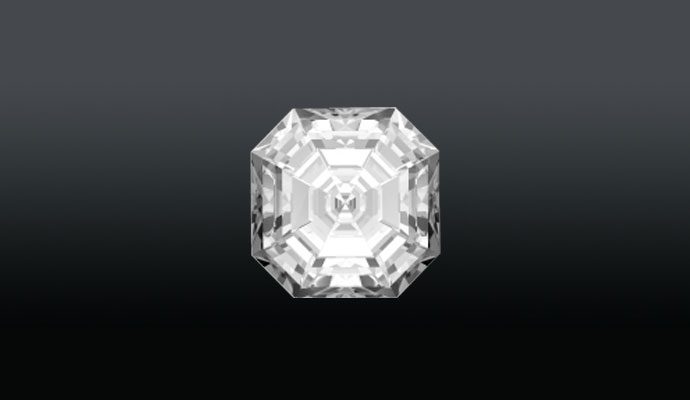
The Asscher cut is very similar to the emerald cut, but rather than being rectangular it is instead square in shape. The pavilion (bottom) of an Asscher cut diamond is cut with rectangular facets to create flashes of brilliance, and the crown (top) of the diamond has a flat table.
As it’s meant to be square, diamonds cut in this style should have a length-to-width ratio of between 1.00 and 1.05.
And because imperfections are more visible in this cut due to its flat table and wide crown, it’s recommended that you choose a diamond of Ideal, Excellent or Very Good clarity, in the colour grade of D to H, and with a clarity grade of FL to VS2.
by Australian Diamond Brokers : July 31st 2015 Come visit our store or browse our website to find out more.
